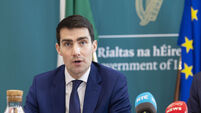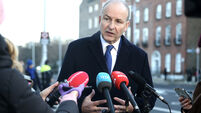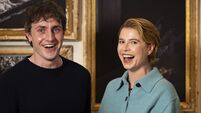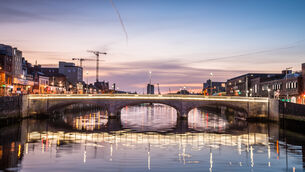Sarah Harte: Our presidential contest illustrates just how far Irish women have come
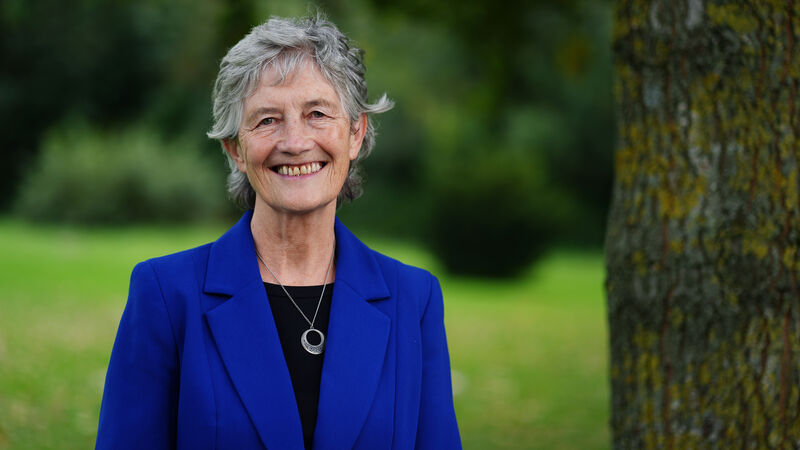
Irish presidential candidate Catherine Connolly: It's fair to say she was born into a severely restrictive cultural and legal environment.
Post the FF apocalypse, Catherine Connolly and Heather Humphreys have been climbing out of fire trucks and shooting hoops, while the boys are off the ballot.
As the race for the park enters the final full week amid claims of smear tactics by the establishment against Catherine Connolly, she is ahead in the polls.
A politico told me over the weekend there was no way Heather Humphreys could catch her rival unless some scandal emerged about Connolly in the dying days of the campaign. Apparently, the margin of error is plus or minus three percentage points on a poll, which probably points to victory for Connolly.
So, we have two women on the ballot. We might have had three if Maria Steen had mustered the support to get over the line. Mary Robinson was elected in 1990, becoming the first Irish female president. Six years later, I sat next to her father, Aubrey de Vere Bourke, who spoke about a new Ireland with a smile on his face.

His daughter had set a trail for other women to go for high office. What is notable now is not only the presence of two women on the ballot, but the contrasting backgrounds of the two candidates. In some ways, they couldn’t be more different. Yet, both Heather Maud Humphreys, nee Stewart, and Catherine Martina Ann Connolly have travelled a long way.
If you consider the country that will vote for them and the country they were born into, the advancement in women's rights and the changed landscape is quite stark.
You realise how Ireland has changed for women generally by considering the various hurdles Connolly and Humphreys have cleared to reach their current positions as prospective presidents.
Catherine Connolly was born in 1957, the year the Married Women's Status Act was passed, granting married women property rights and formal contractual capacity. In a Dáil debate in November 1957, the then minister for justice, James Everett, said the point of the act was to put married women in the same legal position as single women and men.
He said: “It means to get rid once and for all of the disabilities under which married women at present suffer.”
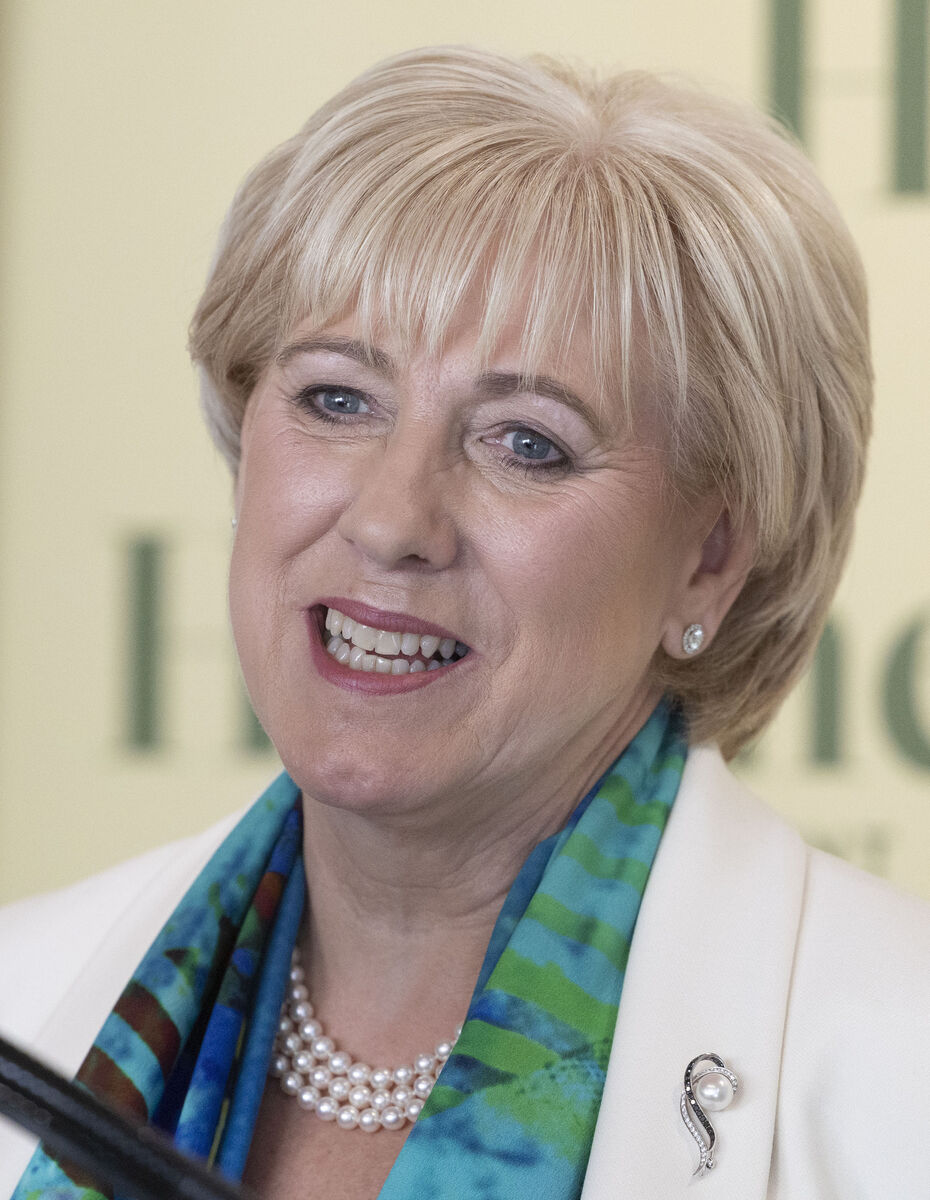
Until that point, a married woman ceased to exist legally upon marriage. Her existence was treated as being merged with that of her husband. The law viewed a husband and wife as a single entity. A married woman could not own any property, and all her property became her husband's, regardless of whether it was hers at the time of marriage or acquired thereafter. If the wife earned money by working, the husband could legally take it.
It's fair to say Connolly was born into a severely restrictive cultural and legal environment. She was from a family of 14, grew up in a social housing estate and tragically, her mother died when she was nine. Yet she benefited from Donogh O'Malley's free education — which was introduced when she was 10 — and went on to prosper. Nobody can deny Connolly's intellect, and her inability to lie when asked inane questions on the campaign trail.
Meanwhile, six years later in 1963, Heather Humphreys was also born into an environment that was often surreally anti-woman. She has cleared many barricades herself, if different ones from Connolly.
Humphreys was existing in a distinct ecosystem. She was from a small farm in Monaghan, and she was lucky enough to have her mother there to tell her she could do any job she wanted to do.
I imagine her mother and many other women quietly saying to their daughters, “Remember, you can do it.” Women like Humphreys' mother were the beginning of the Irish version of feminism, although it wouldn’t have been called that.
Did Humphreys' mother imagine her running for the presidency in her Monaghan kitchen? Possibly not, but she dreamed of a different life for her daughter.
The year Humphreys was born, the contraceptive pill was introduced as a ‘cycle regulator’ because its use as a contraceptive was illegal. Sympathetic doctors and women had coded conversations where women asked for the pill to regulate heavy or irregular menstrual periods.
This was one in a long line of Irish solutions to Irish problems, part of our massive stomach for hypocrisy and doublethink, giving much fodder to the likes of Flann O’Brien.
For many women, without access to the pill, God continued to be good and sent them babies. And unless born into privilege, with no washing machine or dishwasher or even disposable nappies, odds on many women were flat to the mat for their family, never mind dreaming of a career outside the home.
Meanwhile, little Presbyterian Heather Humphreys was growing up near the border, born and raised outside Drum village, a place often described as “the most Protestant village” in the State. When she was nine, 13 demonstrators were shot dead in Derry during Bloody Sunday.
When she was 11, on May 17, the Dublin and Monaghan bombings occurred. Twenty-five people were killed and more than 100 were injured in Dublin, and six deaths occurred in Monaghan.
They were dark times, and Humphreys, not as naturally skilled a debater as Connolly, is a symbol of how far we have moved towards a candidate who might represent different traditions on the island.
Many border people still recoil from questions about identity on both sides of the divide. I was at a work event during the summer in Belfast when I asked a Tyrone man: “Are you Catholic or Protestant?", and he told me, half-seriously, half-jokingly, “People have been shot for less than asking that question up here.”
Humphreys favours a united Ireland. Catherine Connolly, in the debate on Sunday, asked the Irish Government to prepare for a united Ireland. So, both candidates supposedly favour a united Ireland, although obviously it’s a greater stretch for Humphreys to sign off on that culturally.
To be reductive, you could say we have a choice between a left-leaning intellectual ideologue and a centrist pragmatist. Yet both are fundamentally women of integrity. Neither is a skilled liar, as so many politicians are.
While many of us crib about this presidential election and the choices laid out in front of us, we should remember Connolly and Humphreys' bids for election represent different types of progress. It says something about our past, our present and our future.
Regardless of who I vote for, I like to imagine Humphreys' and Connolly's respective mothers smiling down on them and thinking: “You go, my girl.”





